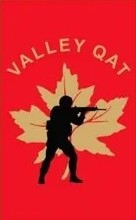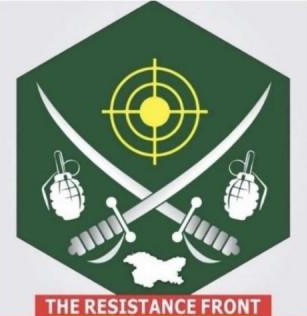
India has several Special Forces (SF) units, with the branches of the Indian Armed Forces having their own separate special forces units. The Indian Army has the Para SF, the Indian Navy has the MARCOS, and the Indian Air Force has the Garud Commando Force. There are other special forces which are not controlled by the military, but operate under civilian organisations, such as the National Security Guard under Home Ministry and Special Group under RAW. Small groups from the military SF units are deputed in the Armed Forces Special Operations Division, a unified command and control structure.

The Border Security Force (BSF) is India's border guarding organisation at its borders with Pakistan and Bangladesh. It is one of the five Central Armed Police Forces (CAPF) of India, and was formed in the wake of the Indo-Pakistani War of 1965 "for ensuring the security of the borders of India and for connected matters therewith".

The Central Reserve Police Force (CRPF) is an internal security and combat force in India under the authority of the Ministry of Home Affairs (MHA) of the Government of India. It is one among the Central Armed Police Forces. The CRPF's primary role lies in assisting the State/Union Territories in police operations to maintain law and order and counter-insurgency. It is composed of Central Reserve Police Force (Regular) and Central Reserve Police Force (Auxiliary).

Law enforcement in India is imperative to keep justice and order in the nation. Indian law is enforced by a number of agencies. Unlike many federal nations, the constitution of India delegates the maintenance of law and order primarily to the states and territories.

The National Security Guard (NSG), commonly known as Black Cats, is a counter-terrorism unit of India under the Ministry of Home Affairs. It was founded on 16 October 1984, following Operation Blue Star, to combat terrorist activities and protect states against internal disturbances. Formalised in the Parliament of India under the National Security Guard Act, 1986. It is one of the seven Central Armed Police Forces of India.

The insurgency in Jammu and Kashmir, also known as the Kashmir insurgency, is an ongoing separatist militant insurgency against the Indian administration in Jammu and Kashmir, a territory constituting the southwestern portion of the larger geographical region of Kashmir, which has been the subject of a territorial dispute between India and Pakistan since 1947.

The Garud Commando Force is the special forces unit of the Indian Air Force. It was formed in February 2004 and has a current strength of over 1500 personnel. The unit derives its name from Garuda, a Hindu God.
The Special Operations Group is a 2,300+ strong elite anti-insurgency force chosen from more than 100,000 troopers of the Jammu and Kashmir Police. The J&K police has since been very competent and on the frontlines in anti-terror activities. The SOG members are also the first targets of the militant groups and local separatists alike.

In India, the Central Armed Police Forces (CAPF) is the collective name of central police organisations under the Ministry of Home Affairs of India. These are technically paramilitary forces formerly known as the Central Para-Military Forces. Since 2011, India adopted the term "central armed police forces" to drop the word "paramilitary". These forces are responsible for internal security and guarding the borders. These forces are indeed headed by a Director General (DG), who is usually an Indian Police Service (IPS) officer, except for Assam Rifles, which is headed by an Lt. General-ranked officer from the Indian Army.
The State Armed Police Forces of India are the police units established for dealing with serious law and order situations requiring a higher level of armed expertise than normal. The State Armed Police Forces exist in addition to the ordinary police services of the various states.
Human rights abuses in Jammu and Kashmir range from mass killings, enforced disappearances, torture, rape and sexual abuse to political repression and suppression of freedom of speech. The Indian Army, Central Reserve Police Force (CRPF), and Border Security Personnel (BSF) have been accused of committing severe human rights abuses against Kashmiri civilians. According to Seema Kazi, militant groups have also been held responsible for similar crimes, but the vast majority of abuses have been perpetrated by the armed forces of the Indian government.

In the wake of heavy monsoon rain and flash floods in Jammu and Kashmir, the Indian Armed Forces were deployed in increasing numbers starting 2 September 2014 to conduct search, rescue, relief, relocation, humanitarian assistance and rehabilitation missions in Jammu and Kashmir. By 18 September, over 298,514 people were rescued from the various parts of Jammu and Kashmir by the Armed forces. The Jammu and Kashmir floods, the worst in a century according to Omar Abdullah, the Chief Minister of Jammu and Kashmir, paralyzed the state government. Omar Abdullah, responding to public criticism, told the media "I had no government" in the first few days following the floods, as "My secretariat, the police headquarters, the control room, fire services, hospitals, all the infrastructure was underwater." Adding "I had no cell phone and no connectivity. I am now starting to track down ministers and officers." The Jammu and Kashmir floods of 2014 have been blamed on heavy rainfall, about 8 inches (200mm) on 4 September alone, on climate change, unplanned and uncontrolled development, encroachment of river banks, lakes, ponds, and massive loss of wet lands, absence of local government flood forecasting system, and poor governance. The Armed Forces humanitarian assistance mission in response to the floods was named Mission Sahayata (assistances). Northern Command's humanitarian assistance to Civil authorities was named 'Operation Megh Rahat'. The Indian Army, Air Force, and the Navy, committed large resources to the assistance mission including over 30,000 troops, 15 engineer task forces, 84 Indian Air Force and Army Aviation Corps fixed wing transport aircraft and helicopters, naval commandos and rescue specialists, and Base Hospital, four field hospitals, over 106 medical detachments. "Operation Megh Rahat", ended on 19 September 2014, but "Operation Sadbhavna", the relief and medical assistance support, according to government press release, will continue in "close synergy with the civil administration and the police".
There have been several attacks on Indian Armed Forces by militants in 2016.

Indian Army operations in Jammu and Kashmir include security operations such as Operation Rakshak, which began in 1990, Operation Sarp Vinash in 2003 and Operation Randori Behak in 2020. Other operations include humanitarian missions such as Operation Megh Rahat and operations with a social aim such as Operation Goodwill and Operation Calm Down. The Indian Army works in tandem with the other arms of the Indian Armed Forces and security forces in Jammu and Kashmir such as during Mission Sahayata or joint operations.

In the Indian Armed Forces women are allowed to join in combat service support branches and in non combatant roles only and they can only become officers except the Corps of Military Police of the Indian Army where women can become sepoys too. The Indian Air Force had 13.09% (2018) and 8.50% (2014) women; the Indian Navy 6% (2018) and 3% (2014); the Indian Army 3.80% (2018) and 3% (2014). As of 2020, three officers have the rank of lieutenant-general or equivalent, all in the Medical Services. In May 2021, 83 women were inducted as sepoys for the first time in the Indian Army, in the Corps of Military Police.

Ansar Ghazwat-ul-Hind is an Al-Qaeda-affiliated Islamist militant group active in Kashmir. The group's stated objective is to create Kashmir as an independent Islamic state under Sharia law and jihad against India.

Crowd control in Jammu and Kashmir is a public security practice to prevent and manage violent riots. It is enforced by police forces through laws preventing unlawful assembly, as well as using riot control agents such as tear gas, chili grenades, and pellet guns.

The Armed Forces Special Operations Division (AFSOD) is an integrated tri-services division of the Indian Armed Forces. The division is tasked to carry out special operations. The AFSOD draws personnel from all three special warfare branches of the Armed Forces.

The CRPF Valley Quick Action Team, also known as Valley QAT, is an elite anti-terrorist unit of the Central Reserve Police Force (CRPF) active in Jammu and Kashmir. The team conducts operations in the region with the Indian Army and the Jammu and Kashmir Police.

The Resistance Front or TRF is a separatist militant organization involved in the ongoing insurgency in Jammu and Kashmir. The organization has positioned itself as a secular organization fighting against the Indian government for Kashmiri freedom, in contrast to past Kashmiri insurgents which have been Islamist. The Indian government has accused the TRF of being an offshoot of Pakistan-based Lashkar-e-Taiba, a claim that TRF has denied. TRF operates primarily in the Kashmir region, with a main base in Srinagar.
















